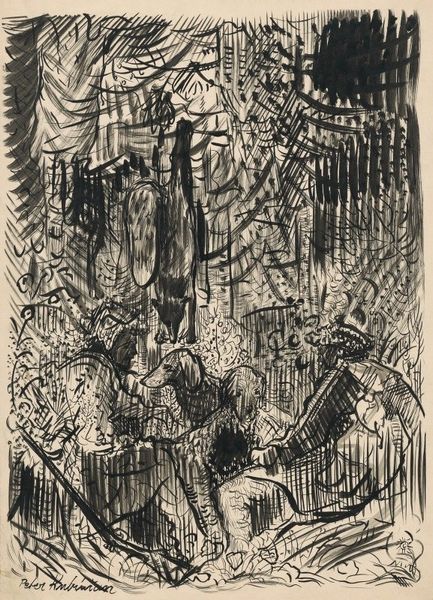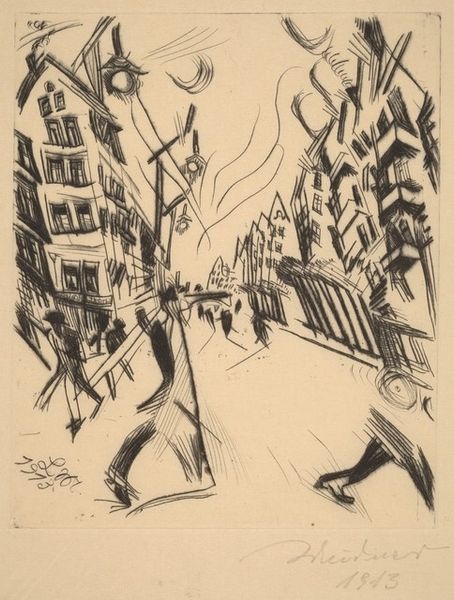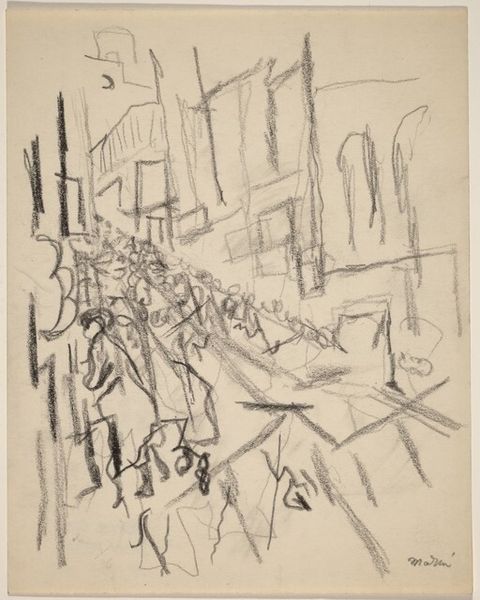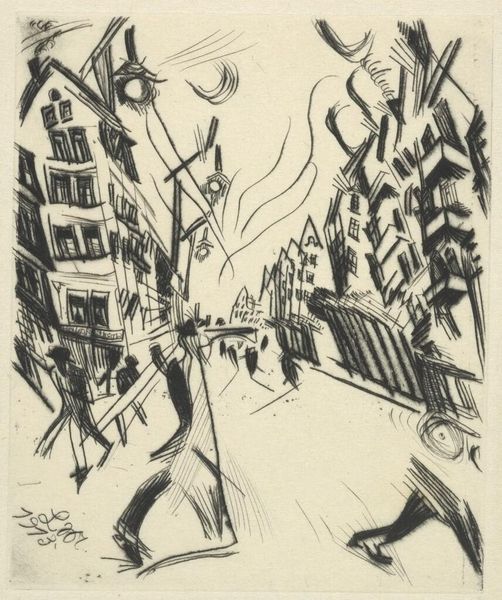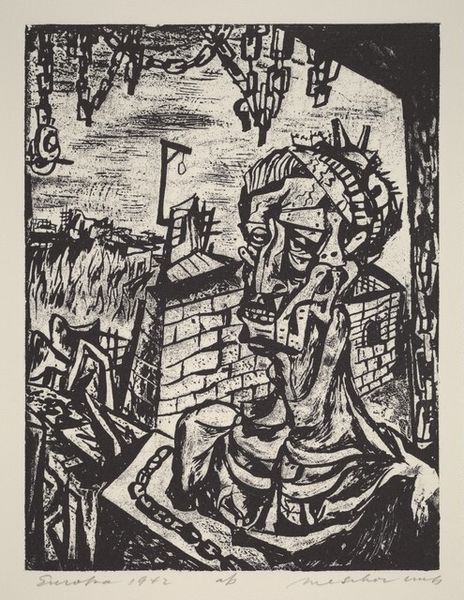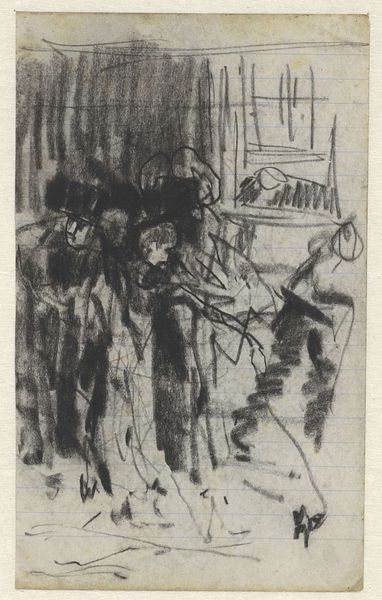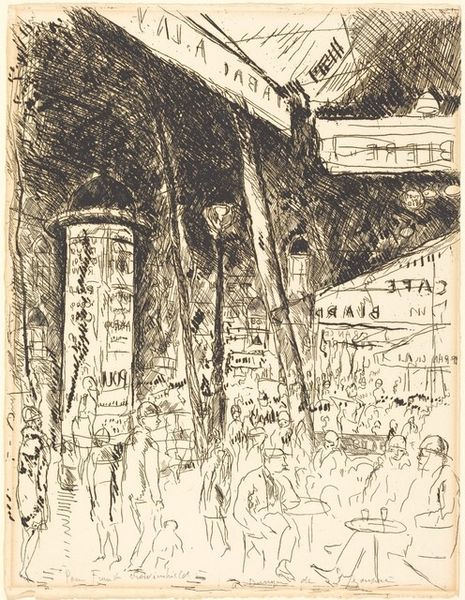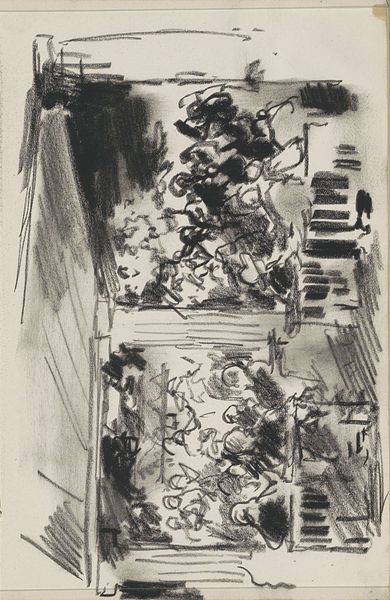
drawing, paper, ink
#
drawing
#
narrative-art
#
german-expressionism
#
figuration
#
paper
#
ink
#
expressionism
#
cityscape
Dimensions: sheet: 40.64 × 30.48 cm (16 × 12 in.) image: 32.07 × 26.51 cm (12 5/8 × 10 7/16 in.)
Copyright: National Gallery of Art: CC0 1.0
Curator: Paul Gangolf created "Koksende Hure," or "Prostitute on Cocaine," around 1925. This drawing utilizes ink on paper, a stark medium that enhances its unsettling nature. Editor: The rawness of the lines! It feels feverish, like a charcoal rubbing from a nightmare. You can practically smell the crowded streets just by looking at the heavy layering. Curator: Absolutely. The piece is awash in sharp angles, almost violently disrupting the image and fracturing reality itself, reflecting the disorienting effects of cocaine. The faces are masks of a lost generation, stripped bare. Editor: Masks manufactured, though, from particular cultural and economic materials, right? Look at the figure front and center—ostensibly the titular prostitute—in her simple frock coat, the men with their bowlers and advertisements clutched tight. These are items of a specific class and moment, rendered cheap by Gangolf’s style. Curator: Very true. But there's more than social commentary happening. The "masks," as you called them, bring to mind primal fear. The angular forms of the buildings crowding in around the figures... this is about more than just being down on your luck. This is the fear of the modern, industrial world itself, suffocating the soul. The work vibrates with a psychic tension familiar within German Expressionism. Editor: And all held together, brought into material being by the pressure of the pen itself. You can practically feel Gangolf bearing down on the page, trying to give these spectres tangible form through crosshatching and hard lines. Curator: He is trying to conjure them—the collective anguish of an era rendered with stunning economy. Look at how he implies the surrounding cityscape. These architectural forms aren’t simple backdrops. The buildings almost seem to feed into the character’s disarray. The artist invokes a sort of shared madness here. Editor: And by drawing, by consuming paper and ink to record his perception of these processes and the subjects affected by them, he enters that madness too. "Koksende Hure" captures more than just the individual—it is the environment, both social and material, bearing down on these figures and Gangolf himself. Curator: I come away sensing how art provides glimpses into psychological states of being, both individually and culturally. The shared memories and feelings surface. Editor: To me, the piece becomes evidence. A snapshot into a brief moment, a specific place, and an economy.
Comments
No comments
Be the first to comment and join the conversation on the ultimate creative platform.
